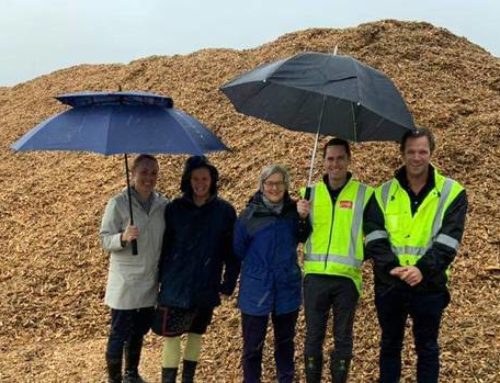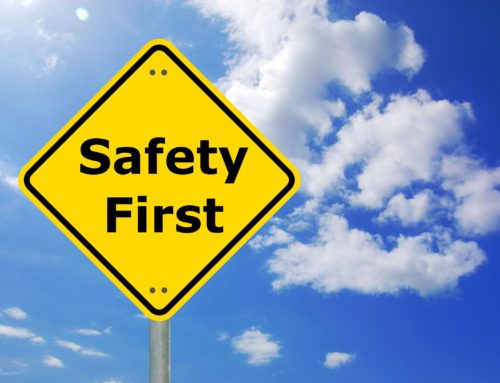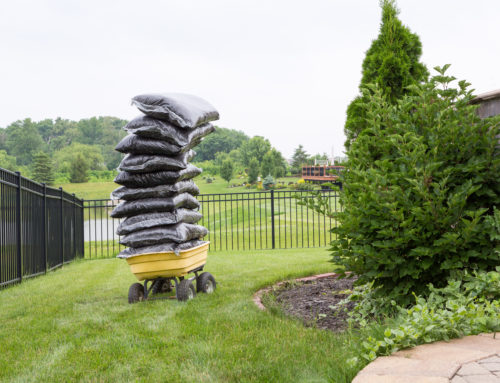The power was out when Russell Horrell woke.
Seventeen thousand homes had been put in the dark on that mid-July morning last year, when the wind raged and the rain kept hammering down.
Horrell, an agricultural consultant, was in Waitangi for a conference that happened to coincide with one of the worst
storms in the region’s history.
In the pre-dawn gloom, he made his way past a darkened reception, climbed into his van and set off into the deluge.
Half-an-hour’s drive down State Highway 11, the typically placid Kawakawa River had risen up to flood a 200m stretch of road.
Horrell’s van, with its low air intake, didn’t make it to the other side.
With water now gushing over the tyres, he was trapped.
Minutes later, a woman ignored the flashing lights of a police patrol car and ploughed into the same torrent.
She might have been swept to her death had her vehicle not been caught by a roadside bollard.
Both had to wait an hour to be rescued by a police officer, who reached them at daybreak from the bucket of a tractor.
Over those chaotic five days, which put thousands of hectares of dairy land underwater and caused $18 million in damage, emergency crews had to mount 15 different rescues.
They weren’t able to help a young mother who drowned at Haruru Falls.
“That’s where we are headed to, aren’t we?” Horrell said this week.
“We talk about global warming, but we are going to see more and more of these sorts of events.”
Christchurch man Russell Horrell was rescued from floodwaters at Taumarere near Kawakawa. Photo / Supplied
Weather warning
This month, Niwa scientists concluded that our meddling with the climate had approximately doubled the chances of that storm happening.
Sophisticated models tell us we’re already reaping the whirlwind, having pumped enough pollution into the atmosphere to reach a carbon dioxide level of 400 parts per million, something not seen for several million years.
Overnight on Wednesday, the World Meteorological Organisation found the past five years had been the warmest such period on record, with many extreme weather events – especially heatwaves — influenced by climate change.
In July, temperatures around the Persian Gulf were, for the first time, close to the upper limits that humans can survive without air conditioning.
This year was on track to have the hottest global average surface temperature on the books, owing to a strong El Nino but also a warming planet.
The WMO’s secretary-general, Michel Jarraud, summed up the situation: “This is all bad news for the planet.”
This picture has grown clearer with each of the major assessment reports by the UN’s Intergovernmental Panel on Climate Change, or IPCC.
The latest, the most comprehensive and exhaustive stocktake of scientific evidence ever compiled, found the warming of our planet was “unequivocal”.
The bigger point: it was extremely likely humans were to blame.
If emissions of greenhouse gases continued, it warned, the world was likely to be at least 2C warmer in many scenarios by the turn of the next century.
Many climate scientists fear this figure is conservative.
We are told that several degrees of warming by 2100 would create an angry new world, where Northland would be hit by storms like similar to that of last year four times as often.
The University of Auckland’s Professor Alistair Woodward pointed to the 2010 heatwave in Russia, which caused roughly 11,000 deaths.
“We know the risk of such extreme events is five times greater than would be expected under a stationary climate.”
With it would come more severe droughts, wildfires, a wave of new subtropical pests, and a higher sea hurling itself on to homes and infrastructure within beach-width of our present high tide mark.
At immediate risk are low-lying areas like Helensville, Petone, South Dunedin, large parts of Napier and Christchurch’s Flockton Basin.
Across the Southern Ocean in Antarctica, the mighty frozen engine of the planet’s climate system, the irreversible loss of its western ice sheet and parts of its much larger eastern one would be well under way, potentially pushing up sea level by another 10m to 20m over coming centuries.
Coastlines would be redrawn across the world, millions or billions of people would be displaced, and New Zealand would become a refuge for homeless migrants from the Pacific and further afield.
The present flood of refugees from Syria into Europe gives a stark indication of how challenging it is to maintain social stability in the face of rapid, involuntary migration.
The world’s health community, which this year described climate change as a “medical emergency”, have pointed to a heightened danger from water-borne infections like cholera and mosquito-borne diseases, such as malaria and dengue.
Supply and security of food would become a point of conflict: those who would suffer the most were populations already vulnerable to hunger.
This, combined with major issues with water availability in many parts of the world, could trigger conflict over resources and spark political turmoil right across the globe.
Showdown in Paris
Can disaster be averted?
Secretary-General Jarraud said greenhouse gas emissions can be controlled, and we have the knowledge and the tools to act. “We have a choice.”
The eyes of the world have now turned to Paris, where delegates from close to 200 countries are gathering for what could prove one of the most important meetings in human history. Forty thousand people, many of them observers, journalists and activists, will descend on a huge 18ha site in Le Bourget, a transport hub to the northeast of the city centre hosting the two-week 2015 United Nations Climate Change Conference.
If Paris becomes the promised land of lasting action, the first tile in the long and winding road to get there was perhaps paved 5,834km away in New York City, 23 years ago.
At UN headquarters, nations adopted the grandfather of global climate policy: the UN Framework Convention on Climate Change, or UNFCCC.
The next big meeting in Germany produced the landmark Berlin Mandate and laid the groundwork for the world’s first greenhouse gas emissions reduction treaty, the Kyoto Protocol.
More promise came with summits at Marrakesh in 2001, and at Bali in 2007, but met an anti-climax at Copenhagen two years later.
It brought the world to the brink of triumph, but instead fizzled with a watery accord absent of any solid commitments to cut emissions.
In 2011, new seeds of hope were sown at Durban, South Africa, with governments signing up for a fresh and universal climate change agreement for the period beyond 2020.
The deadline: 2015.
“It is going to be a tough negotiation, we are talking about making big changes to the global economy and everyone has a lot at stake,” Climate Change Issues Minister Tim Groser told the Weekend Herald. “But this is a very different meeting to the Copenhagen summit in 2009.”
New Zealand’s haggling points include climate finance, carbon markets, agriculture and land use, particularly rules around forestry.
Tens of thousands of hours of discussion will likely boil down to about 12 pieces of paper, which will effectively be a signed contract by the world to push down emissions beyond 2020 and hopefully avoid the worst of what climate change threatens it with.
Our part in the dance isn’t inconsiderable.
In fact, the legal form of the agreement is referred to as the “New Zealand proposal” and suggests that the domestic political obstacles some countries may face in ratifying an agreement – namely emissions reduction targets binding under international law – can be avoided by placing the targets outside the agreement itself.
The rationale is that if the eventual agreement is legally binding, with enforced obligations on parties to have targets and take part in processes to demonstrate meeting them, it achieves both participation and a good environmental result.
The negotiating concept of bounded flexibility, which sees that the agreement sets up parameters to cover all key emissions, within which parties can nationally determine their mitigation, is also a Kiwi concept.
Much of the positive buzz around next month’s talks is based on the fact that nearly every country in the world has arrived with its own post-2020 pledge, or what are called Intended Nationally Determined Contributions, or INDCs.
Notably, the big polluters have fronted up with solid INDCs, especially China and the United States, respectively the source of 25 per cent and 15 per cent of global greenhouse gas emissions.
By contrast, New Zealand contributes around 0.15 per cent.
Another big cause for optimism is the help for developing nations, which lack the cash and means to cut their growing emissions.
Our first climate change ambassador, Victoria University’s Dr Adrian Macey, said without these countries onboard, efforts would be meaningless.
“You could get all of the OECD countries to reduce their emissions to zero, but you still wouldn’t stabilise the climate: it’s as simple as that.”
To get developing nations on the bus, the world is forking out for a fund that, within five years’ time, should be annually dispensing US$100 billion.
Setting targets
Some hope the Paris talks will bring about enough reductions to keep future temperature rise below the 2C threshold that many scientists see as critical.
But Professor Dave Frame, of Victoria’s Climate Change Research Institute, said this was unrealistic. “Paris should be judged on its ability to get countries to participate in climate policy, subject to some meaningful but basically domestic compliance mechanisms.”
Essentially, he said, an international climate agreement hinged on three key planks: participation, compliance and stringency.
“Kyoto made a mistake by focusing on stringency for some before participation by all — that’s the wrong approach in a problem like this.”
Paris presented a chance to start over, focusing on getting broad buy-in and potentially signalling some carrots and sticks around compliance.
“On the whole, we should judge Paris on the basis of its ability to get everyone to offer something.”
For New Zealand, that something is a new target of slashing emissions by 30 per cent from 2005 levels, and 11 per cent from 1990 levels by 2030.
This isn’t much of an improvement on the 2020 targets the country already had on the table: a conditional 10 to 20 per cent an unconditional five per cent below 1990 levels.
More than two thirds of the 11,000 people who made submissions during the Government’s consultation thought we should have aimed much higher, committing to a 40 per cent reduction over 1990 levels by 2030.
“By refusing to show significant leadership, at present, New Zealand weakens the negotiations and undermines its own reputation,” said Victoria University’s Associate
Professor Ralph Chapman, author of the new book Time of Useful Consciousness: Acting Urgently on Climate Change.
Our pledge was “ethically indefensible”, he argued, considering our comparative prosperity, our capacity for further emissions reduction, and the pressing need to act for the sake of future generations.
Others, however, say the pledge is reasonable.
Dr Macey, who chaired the breakthrough Kyoto negotiations in Durban, said though it was great to make targets as ambitious as possible, countries had to be pragmatic in ensuring these ticked all the right boxes. “And one of those boxes is the no back-sliding box.”
Emissions trading
The Government’s plan to meet its new target draws on a combination of forestry off-sets, domestic emissions reductions and “purchasing” emissions reductions from other countries.
Groser said the pledge was conservative in its assumptions for developments in innovation and didn’t rely on any technological silver bullets to get us there.
That said, he was encouraged by recent leaps in areas such as battery storage, electric vehicles and agriculture which produced just under half of New Zealand’s total emissions, mainly via the mouths of methane-belching sheep and cattle.
After screening more than 100,000 possibilities, Kiwi scientists this year unveiled animal-safe compounds that could slash methane emissions by up to 90 per cent.
However, “it will be some time,” Groser added, “before these new technologies are proven and commercially viable.”
In the meantime, the country would continue to rely on its chief climate mechanism, the Emissions Trading Scheme.
Launched in 2008 to meet its carbon-cutting Kyoto obligations, the concept was meant to be a relatively simple and effective step towards de-carbonising the country.
Under the scheme, companies are required to match each unit of emissions they report with an allowance, or credits, they must pay to the Government.
People who plant forests, meanwhile, can report the carbon dioxide they take out of the air and claim credits, which they can sell, thus creating a trading market and an incentive to lower emissions.
But just a year after its introduction, the scheme was overhauled by the new National-led Government, ushering in a raft of amendments many argued gave polluters an easier ride.
At the time, the Government called its new ETS “workable and affordable”.
The Herald dismissed it as a “miserable offering to the international effort”.
Six years on, criticism hasn’t waned.
The University of Canterbury’s Professor Euan Mason noted how the latest report on the ETS showed how nearly all the credits “surrendered” to the Government weren’t domestic units, but international ones that could be bought by companies at much cheaper prices and imported into the scheme from overseas.
Imports of these so called “hot air” credits, which have since been banned, had coincided with a resumption of deforestation, he said, at a time when there had been a dramatic reduction in new forest planting.
Just before he left for Paris this week, Groser announced another review of the ETS to assess its “operation and effectiveness” in helping to meet the new target.
It would look at whether high-polluting industries such as fossil fuels, waste and energy should meet the full obligation for their emissions rather than just half, as they do now.
Despite this possibility, critics were quick to point out the continued absence of agriculture, something which came reportedly against the advice of Ministry for the Environment officials.
“It shows extremely bad faith for the Government to take it off the table before a deal has even been reached,” Green Party climate spokesman Kennedy Graham said.
“National is doing a long-term disservice to farmers, who need to start having a discussion now about how and when farmers should be exposed to an emissions price.”
Prof Chapman believed New Zealand could easily strengthen its ETS or, better still, switch to a more transparent carbon tax.
“But there is currently no government that will do so: the ETS reflects a lack of ambition.”
Really our last chance?
The review comes as tens of thousands of Kiwis will take to the streets around the country this weekend, with hope of getting stronger climate action.
Beyond the cries of those taking part in the global march, recent research suggests the rest of New Zealand society, or at least the bulk of it, also cares.
A survey published this year by Wellington-based Motu Economic and Public Policy Research found 87 per cent of New Zealanders are at least somewhat concerned about the effects of climate change on society in general.
A further 63 per cent were “concerned” or “very concerned” about its societal effects and 58 per cent were concerned or very concerned about the personal effects.
Paris, said Prof Woodward, offered us the best chance yet to switch our collision course, although trying to stay within the 2C mark by 2100 would be a “huge challenge”.
But without significant action in Paris, the world is more likely than not to experience 4C of warming, on average, by the end of the century.”
Prof Frame believed that if technology couldn’t help us, it was hard to see the world limiting warming to anything like 2C.
“But, at least in the case of CO2 emissions, we can’t simply wait for technology because the problem worsens the longer things go on as they are,” he said.
“The sooner we reduce emissions, the lower the total cumulative emissions we emit and the lower the overall warming in response. The sooner we hit the brakes, the sooner we stop.
“It will still take many decades to move away from fossil fuels – delaying things further just makes things worse for young people and future generations.”
Yet he didn’t view Paris as “the last chance” to save the planet, for several reasons.
Negotiations alone couldn’t determine that outcome and whether we stay under 2C depends not only on what we do now, but on what our descendants do, too – promises we make on behalf of future people struggle to be credible.
“Repeated threats regarding last chances have diminishing credibility [and] the 2C target is an aspiration, not a physical threshold – there’s no evidence that the world is radically different at 2.1C than it is at 1.9C,” he said.
“The ‘last chance’ thing is neither compelling nor constructive, nor credible. People should choose better metaphors.”
Horrell, meanwhile, only needed to remind himself of his close call last July about what would come if no action was taken soon.
“Six inches higher and it would have been enough to wash my van off the road,” he said.
“It’s not just getting warmer, it’s getting more unstable. I think the general populace is just starting to understand that.”
By Jamie Morton @Jamienzherald
– NZ Herald
Copyright ©2015, NZME. Publishing Limited






